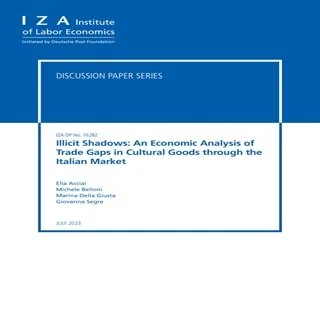Edited by France Desmarais
Every day, cultural objects disappear. Stolen from their place of conservation – whether pilfered from a museum or, as is most often the case, ripped out of an archeological site – they embark on the road often travelled by illicit antiquities. A road we are still trying to map with more precision. The desire to better understand that journey, to figure out what the routes are, to know who the culprits could be, and of course to discover where these coveted objects end up, spurred the creation of the first – and only – International Observatory on Illicit Traffic in Cultural Goods by the International Council of Museums (ICOM) in December 2012, thanks to a grant from the European Commission. ICOM has, for long, been at the forefront of the fight against illegal trade. The protection of the world’s cultural heritage has featured in the organization’s mission statement since 1947, a year into its creation 70 years ago. Ever since, as the voice of the world museum community, ICOM has played a foremost part in advocating advancement in the protection of cultural heritage practice in general, and in countering illegal trade in particular (UNESCO 1972). From the Code of Ethics for Museums, now referred to as the international deontological standard for museum professionals, to the well-known Red Lists of Cultural Objects at Risk, directly associated with helping law enforcement recognize and seize important quantities of antiquities, the aim has always been to develop innovative practical tools designed to help protect cultural property. In need of figures In 2011, the idea of creating an observatory stemmed from the dire need to obtain more information on the whereabouts of stolen objects and more reliable facts and figures on illicit traffic in art and heritage. It is surprising, to say the least, that illicit traffic in cultural objects should have been officially recognized for decades – if not a century – but that no organization gathered official global statistics to illustrate the extent of the problem. Many numbers are brought forward by different expert organizations to quantify the trade, in mass or in financial value. Some of those numbers are astronomical. Yet, none can be confirmed by official empirical data. While the INTERPOL Expert Group on Stolen Cultural Property concluded, in June 2015, that data gathering and systematic research are of high relevance for combatting the illicit traffic in cultural items, it remains impossible, to this day, to precisely rank illicit traffic in cultural objects so as to measure it to other types of transnational crimes. Although some improvement has been observed in the collection and analysis of the numbers related to theft and seizures, it is unfortunately still impossible to answer questions regarding the number of objects that disappear or are sold illegally each year. In the big data era, and in a moment in time when massive looting has spread to large parts of the world, even as political leaders and the general public seem more than ever concerned about the fate of cultural heritage in danger, this impossibility to quantify seems paradoxical. The reality is that, despite the palpable increase in global awareness concerning the importance of protecting cultural objects, the actual means to support their protection are somewhat lagging behind. If, as a long-standing actor in he global fight against illicit traffic, ICOM wants to keep developing useful tools and proposing appropriate response mechanisms to effectively counter the illegal trade, it needs to know and understand the phenomenon as yet. Identifying the trade routes, the agents involved and the types of objects targeted is the only way to comprehend the significance of the illegal art and antiquities market. This can only be tackled through transdisciplinary research initiatives, such as that initiated with the Observatory project, as relevant organizations are encouraged to do under the 1970 UNESCO Convention. Indeed, Article 17 of the Convention on the Means of Prohibiting and Preventing the Illicit Import, Export and Transfer of Ownership of Cultural Property mentions the possibility for relevant organizations to conduct studies on matters related to the illicit movement of cultural property. Looting and illicit traffic represent one of the global challenges yet to be faced, for which a research and data gathering body such as the International Observatory in Illicit Traffic in Cultural Goods is needed. What we do know for a fact is that museums are particularly concerned by theft in art and heritage, as primary places of conservation from which objects can be stolen, but also as collecting institutions that could, unwillingly, end up buying looted cultural property. Indeed, objects are not only stolen from museums, but they can also land, with the help of sometimes ill-informed accomplices, in the hands of private collectors. Later, through a donation for example, they might find themselves in museums. It is specifically because stolen art and antiquities risk falling into museum collections that it is the duty of the world museum community to come together and counter illicit traffic in art and heritage. The inaugural gesture is to apply strict ethical practice concerning provenance of acquisitions. But it does not suffice. It must be supported by strong national programmes
Paris: ICOM International Observatory on Illicit Traffic in Cultural Goods , 2015. 215p.





















